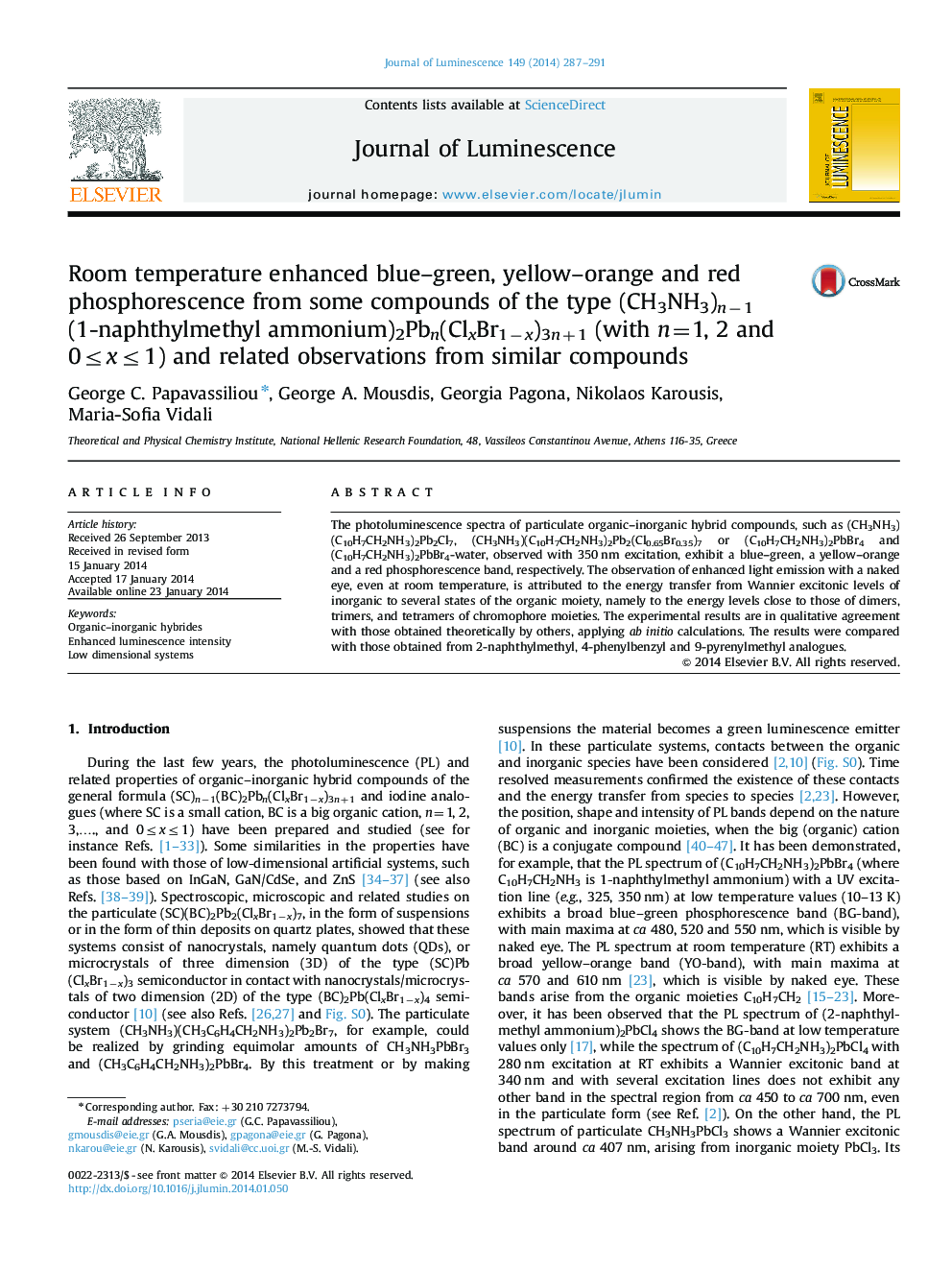| Article ID | Journal | Published Year | Pages | File Type |
|---|---|---|---|---|
| 5400276 | Journal of Luminescence | 2014 | 5 Pages |
Abstract
The photoluminescence spectra of particulate organic-inorganic hybrid compounds, such as (CH3NH3)(C10H7CH2NH3)2Pb2Cl7, (CH3NH3)(C10H7CH2NH3)2Pb2(Cl0.65Br0.35)7 or (C10H7CH2NH3)2PbBr4 and (C10H7CH2NH3)2PbBr4-water, observed with 350Â nm excitation, exhibit a blue-green, a yellow-orange and a red phosphorescence band, respectively. The observation of enhanced light emission with a naked eye, even at room temperature, is attributed to the energy transfer from Wannier excitonic levels of inorganic to several states of the organic moiety, namely to the energy levels close to those of dimers, trimers, and tetramers of chromophore moieties. The experimental results are in qualitative agreement with those obtained theoretically by others, applying ab initio calculations. The results were compared with those obtained from 2-naphthylmethyl, 4-phenylbenzyl and 9-pyrenylmethyl analogues.
Keywords
Related Topics
Physical Sciences and Engineering
Chemistry
Physical and Theoretical Chemistry
Authors
George C. Papavassiliou, George A. Mousdis, Georgia Pagona, Nikolaos Karousis, Maria-Sofia Vidali,
